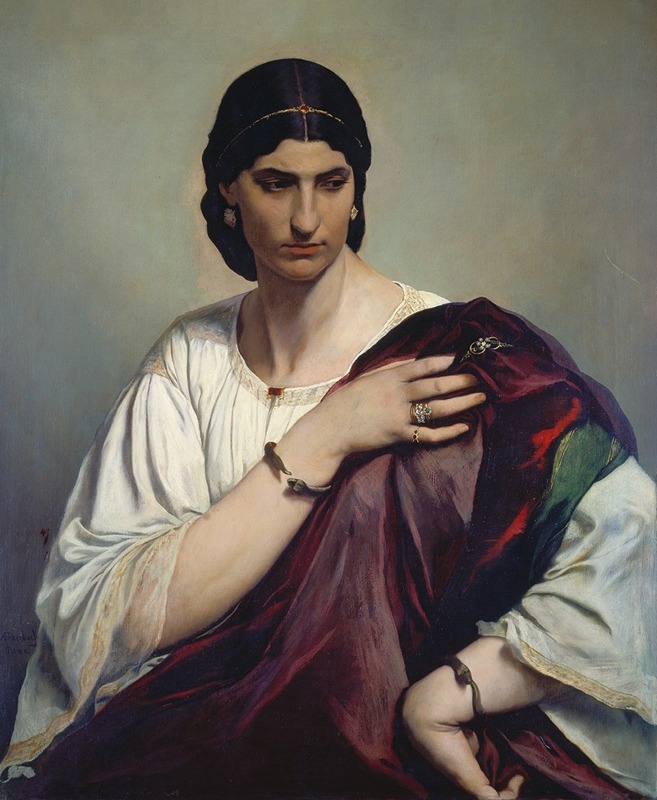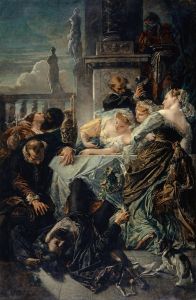
Lucrezia Borgia, Portrait of a Roman woman in white tunic and red robe
A hand-painted replica of Anselm Feuerbach’s masterpiece Lucrezia Borgia, Portrait of a Roman woman in white tunic and red robe, meticulously crafted by professional artists to capture the true essence of the original. Each piece is created with museum-quality canvas and rare mineral pigments, carefully painted by experienced artists with delicate brushstrokes and rich, layered colors to perfectly recreate the texture of the original artwork. Unlike machine-printed reproductions, this hand-painted version brings the painting to life, infused with the artist’s emotions and skill in every stroke. Whether for personal collection or home decoration, it instantly elevates the artistic atmosphere of any space.
Anselm Feuerbach's painting "Lucrezia Borgia, Portrait of a Roman Woman in White Tunic and Red Robe" is a notable work by the German painter, who was one of the leading figures of the 19th-century German art scene. Feuerbach, born in 1829, was known for his classical style and his ability to capture the essence of historical and mythological subjects. This particular painting is a representation of Lucrezia Borgia, a historical figure who has intrigued historians and artists alike.
Lucrezia Borgia (1480–1519) was an Italian noblewoman, the daughter of Pope Alexander VI and a member of the infamous Borgia family. Her life has been the subject of much speculation and myth, often characterized by tales of intrigue, power, and scandal. However, modern historians have worked to separate fact from fiction, presenting her as a more nuanced figure than the one often depicted in popular culture.
Feuerbach's portrait of Lucrezia Borgia is a testament to his skill in capturing the elegance and complexity of his subjects. The painting depicts Lucrezia in a white tunic and a red robe, a choice of attire that reflects both her noble status and the fashion of the Renaissance period. The use of color in the painting is significant; the white tunic symbolizes purity and innocence, while the red robe may suggest passion, power, or even danger, reflecting the dual nature of Lucrezia's historical reputation.
Feuerbach's approach to this portrait is characterized by a sense of idealization, a common trait in his work. He often sought to portray his subjects with a sense of timeless beauty and grace, drawing inspiration from classical antiquity. This is evident in the serene expression and poised demeanor of Lucrezia in the painting, which contrasts with the often sensationalized accounts of her life.
The painting is also notable for its composition and the way Feuerbach uses light and shadow to create depth and dimension. The soft lighting enhances the delicate features of Lucrezia's face, while the shadows add a sense of mystery and intrigue, inviting viewers to ponder the true nature of the woman depicted.
Feuerbach's "Lucrezia Borgia" is housed in the collection of the Staatliche Kunsthalle Karlsruhe in Germany. It remains an important work within Feuerbach's oeuvre, exemplifying his mastery of portraiture and his ability to convey the complexities of historical figures through his art.
In summary, Anselm Feuerbach's portrait of Lucrezia Borgia is a distinguished example of 19th-century portraiture that captures the enigmatic allure of one of history's most fascinating women. Through his use of color, composition, and classical influences, Feuerbach presents a portrait that is both beautiful and thought-provoking, inviting viewers to look beyond the myths and consider the real woman behind the legend.
















